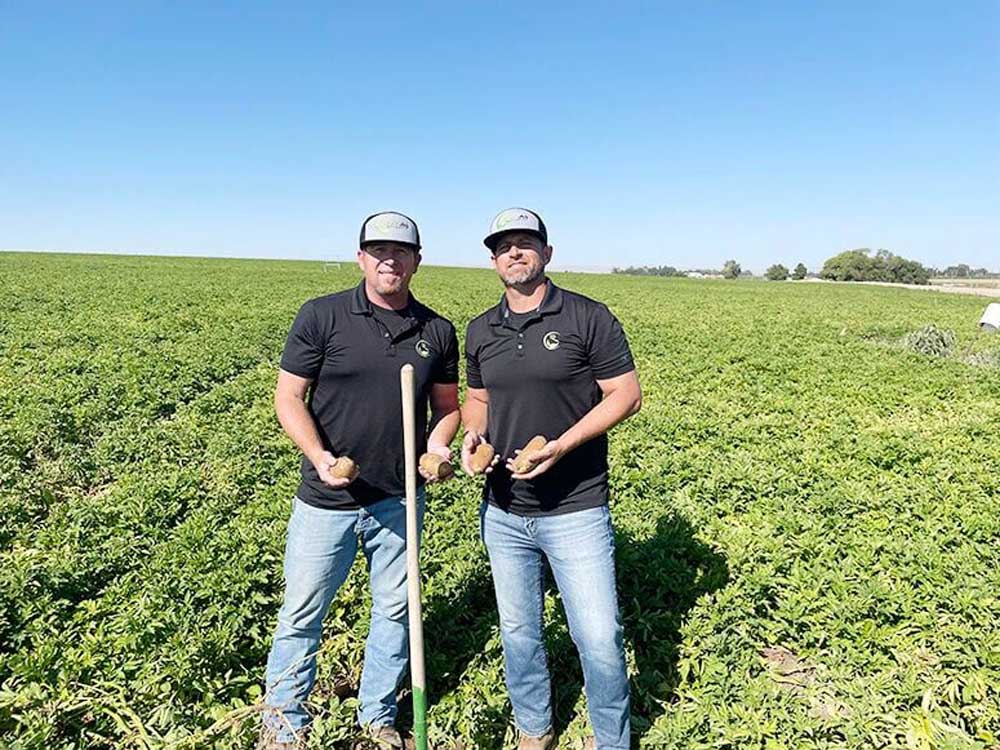Regenerative agriculture company grows
Published 4:21 pm Friday, August 30, 2024

- Roger McKinley and Trey Reid in a potato field near Wilder, Idaho.
An Idaho company helps farmers take small steps toward adopting regenerative and sustainable practices.
“It’s like a marathon,” said Roger McKinley, business development specialist for Wilder, Idaho-based RegenAg Nation, which is in its fourth growing season. “You train in steps. You’re not going to do it all in one day.”
Trending
Quick, drastic moves to new approaches are unlikely anyway, since farmers need to produce at scale year after year and rely on proven, cost-effective methods and inputs to do so.
As McKinley, lead agronomist Trey Reid and others at the company see it, regenerative agriculture comes down to a handful of fundamentals that farmers can adopt gradually. They take a modular approach based on simple trade-outs to make changes manageable. Switching to a “soft” chemistry is an example.
“What we are not saying is that we are dead-set against conventional,” Reid said.
“We believe there needs to be balance, a way to blend both systems,” said McKinley, an ag podcaster. “We are a hybrid-based company. We have to have a blend of regenerative and conventional to really move this ball forward.”
On-the-ground practices include using a soft-chemistry product along with a conventional — to increase total active ingredients and effectiveness while reducing resistance, Reid said — incorporating biological products, emphasizing beneficial predatory insects in pest reduction and gearing plant nutrition in part to pest and disease resistance.
“A lot of it is preventative,” he said.
Trending
As for insects, “there’s a lot of natural predators in these systems, but if we use the wrong insecticide, we can kind of wipe out the good and the bad,” Reid said.
Among RegenAg’s fundamentals, or “pillars,” are enriching and enhancing soil biology, increasing soil carbon, optimizing plant nutrition and function, and reducing agro-chemicals and synthetic inputs.
Disease-suppressive soils are a desired outcome given that “right now, the model is that growers spend a tremendous amount of money to reduce very expensive problems,” Reid said. “What if your soils became more resistant or suppressive, naturally?”
Ideally, soil is viewed as “more of an asset than something to pull a crop out of every year,” McKinley said.
RegenAg, owned by Tim and Jen Bryan, is an independent, full input supplier and consulting company that handles some 140 products. The business has customers in five states. It has six full-time employees.
“A lot of products we use and source are on the biological side,” Reid said.
Year-to-year revenue growth is 100% to 300% in some product categories, he and McKinley said. Low-salt fertilizers, products that help drive fertilizer efficiency, carbon-related offerings that help soil hold nutrients and water, and soft chemistries are selling well.
Growth has benefited from cost competitiveness, challenges for traditional chemicals such as pest and disease resistance and regulatory approval timetables, and several big companies’ interest in regenerative and sustainable practices, McKinley said.
“The industry is starting to shift, and there are some pretty big benchmarks for 2030,” he said. Farmers “are starting to look at new practices and improvements that are economically feasible and scalable at the same time.”








